How to choose the best snow goggle lens color
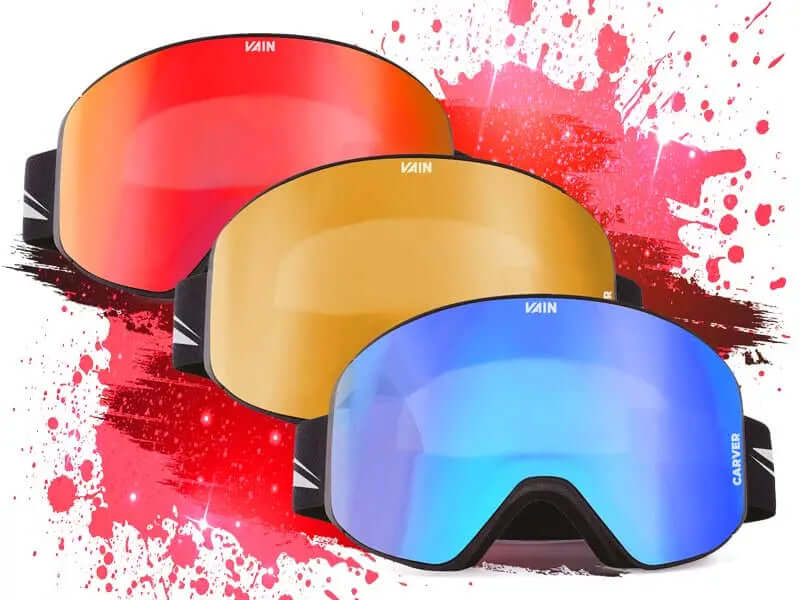
Everyone knows the situation; it’s a flat light day and you’re struggling to see bumps and lines. Or it’s a bluebird day and your being blinded by the bright sunlight. Both situations are not ideal and there are solutions to them. Ski goggle brands have developed lens colors and contrast enhancing technologies to help you on the way. We’ll explain everything from weather to new technology in this article.
- Understanding why lens colors
- What is VLT?
- What is CE category S1, S2, S3 or S4?
- Winter sport weather types
- What ski goggle lenses are there
- Cylindrical vs Toric vs Spherical lenses
- Single layer vs double layer lenses
- Photochromic vs normal lens
- Coatings & purpose
- Q&A
After reading the topics above, you will be able to pick the best ski goggle lenses for your ski goggle.
1. Understanding why lens colors are important
If you are ever blinded by glare reflected off the snow. Caught an edge because you couldn’t see the bump ahead. Then you know the importance of having the right pair of ski or snowboard goggles for each weather condition. Ski goggle lenses come in a wide variety of tints that filter color and light in different ways to enhance your vision. Some tints work best on bright, bluebird days. Other ski goggle lenses will work better on flat light days or overcast days. Lens technology has made a lot possible for the ski goggle market.
Which lens color is the best for you? Keep reading on to find out.
2. What does visible light transmission (VLT) mean for snow goggles?
VLT is the amount of light that can pass through a lens. Visible light transmission (VLT) is measured as a percentage of light able to pass through. It’s affected by various factors like lens color, thickness, coatings and lens material.
How do I know which VLT % lens I need?
Most manufacturers will indicate what VLT % the lens is. A low % VLT will indicate a dark lens which let’s low amounts of light through. With a higher VLT %, then there will be a lot of light passing through. We’ll show up an example.
If there is a flat light situation you want a high % VLT lens. Your view will be adjusted like this:

If it’s sunny out there and you have a lot of sunlight, you want to go for a low % VLT lens. Your view will be adjusted like this:

VLT is also used for the CE categories like S1. You will read about that in the next paragraph.
3. What does CE category S1, S2, S3 and S4 mean for ski goggles?
The CE categories are a requirement from the European Union. The CE category indicates the amount of % VLT a lens has. In total there are 5 CE categories; 0 to 5. The categories are sometime pronounced as S0 to S5, they mean the same.
CE also indicates that the ski goggles have passed the required safety measures. A few of these requirements are:
- UVA, UVB, TSUVA ultraviolet (UV) sun light ray blocking.
- Ventilation
- Optical requirements like vision
- Protection against snow and water
- Mechanical strength
- And a lot more
If you buy CE marked ski goggles, you’re guaranteed safety.
Do you need CE category S1, S2, S3 or S4 ski goggles?
Yes, a CE category ski goggles is mandatory. It indicates that the goggle has passed the European standards for snow goggles. The lens VLT % is validated and optical requirements are met. Also, you are protected from the harmful UV rays. The mechanical strength is validated by a bullet drop test. So that your eyes are safe from rocks flying by while going 120km/h down the slopes.
For what weather do I use CE category S1, S2, S3 or S4?
The CE category indicates the VLT percentages, but for what weather are they suitable. We’ll explain this with the following table:
|
CE Category |
Tint |
VLT % |
Best applied weather conditions |
|
CE Category 0 / S0 |
None |
80 – 100% |
Clear lens good for midnight & snowy days weather |
|
CE Category 1 / S1 |
Light |
43 – 80% |
Light tint lens for misty, foggy, snowy & dull overcast days |
|
CE Category 2 / S2 |
Medium |
18 – 43 % |
Good all round lens tint for majority of weather types |
|
CE Category 3 / S3 |
Dark |
8 – 18% |
Dark lens for sunny days and sensitive eyes |
|
CE Category 4 / S4 |
Very Dark |
3 – 8% |
Very dark lens for intense bright light conditions |
How do CE categories look like?
If we put the CE categories overlays in picture it will look something like this:

4. What winter sport weather types should I take into account?
Now we know what VLT and CE mean, we can dig deeper into the weather types. We divide the weather types into the following categories:
These are all the weathers to take into account, we’ll tell you why.
How to choose the best snow goggle lens for sunny weather?
In sunny weather there is an obvious amount of sunlight. Therefore, we need to pick a lens that blocks a lot of it. This would be a low % VLT lens, small light will be able to pass through.
- For extremely high-altitude glaciers and intense bright light; go for CE category S4.
- For sensitive eyes or bright sunny days; go for CE category S3
- For all-round purpose and sunny days; go for low CE category S2 (20-30% VLT recommended)
Below is a comparison of a 20% VLT lens on a sunny day at the snowy slopes.

How to choose the best snowboard goggle lens for cloudy weather?
In cloudy weather there is slightly less sunlight and we need a medium tint lens. Be cautious about slightly cloudy days where sunlight may break through and blind you. Therefore, you don’t want to go for a too high CE or VLT value lens.
- For cloudy days; go for CE category S2 (VLT 30-43% recommended) or CE catergory S1 (VLT 43-65% recommended)
- Contrast boosting advisable
- For slightly cloudy days with chance of sunbreak; go for CE category S2 (VLT 20-40% recommended)
- Contrast boosting advisable
Below is an image of the yellow base lens in cloudy circumstances. You can notice better contrast in the weather conditions.

How to choose the best ski goggle lens for precipitation, foggy and misty weather?
Precipitation is the hardest category of all, as it is mostly for short duration. When precipitation is happening, there is commonly a low light situations. Therefore, we need a high % VLT low light conditions lens. We distinguish snowy conditions, mist/fog and rain/hail.
- For snowy weather; go for CE category S1 lens (VLT 60-80% recommended)
- Contrast boosting advisable
- For mist or foggy weather; go for CE category S1 (43-65% recommended)
- Contrast boosting advisable
- For rain or hail; go for CE category S1 (43-65% recommended)
Below is an example of a yellow base lens in foggy circumstances. The lens boosts contrast.

Keep in mind that at these weather conditions sunbreak might happened. You don’t want to be surprised by bright conditions that blinds you. Stick to the lower VLT % recommended for the best all-round coverage.
How to choose the best ki goggle for night time skiing?
The best snow goggle lenses for night time skiing are the ones with the highest VLT. It's dark outside so you want to have as much light coming into your eyes as possible.
Night time skiing with synthetic lighting? Then we recommend a yellow base lens as it will reduce the glare from syntheric light.
How to choose the best ski goggle for stormy conditions?
Stormy conditions can be really difficult and it is hard to choose a right goggle for it. We recommend an low light lens of CE category S1 (60-80%).
5. What snow goggle lenses are there?
Now that we have had the basic education and weather recommendations, we can dig deeper into the goggle lens options. We’ll break down all options and features for the ski goggle lenses and deal with them in the following sections.
If we cut down the lens in simple sections, we have the following most important differences:
- Interchangeable ski goggle lenses
- Base lens colors
- Lens shapes (Cylindrical, Spherical & Toric)
- Single layer & double layer lens
- Photochromatic
- Lens coatings
These are the 6 most important aspects of the lens.
What are interchangeable lenses?
Changeable ski goggle lenses have an integrated system that makes it possible to swap lenses of your snow goggle. It is especially useful to adjust your goggle for changing weather conditions.
The best available exchangeable lenses are the magneti ones:
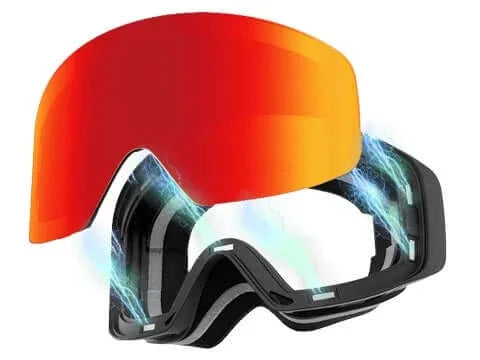
What base lens colors are there?
The base lens comes in all colors of the rainbow, but that’s not the important aspect. The important first aspect is the VLT base value it gives for your goggle. The second aspect is the lens color for boosting contrast in certain conditions.
For boosting contrast it comes down to two lens colors that are really useful. A yellow base lens will boost contrast slightly in flat light conditions. A Orange lens boosts the contrast a bit more than the yellow one and is really useful in foggy weather or mist.

6. Cylindrical vs spherical vs toric lens
The lens shape is the first important decision to make when choosing goggles. This determines the amount of peripheral view, vision and how light is perceived. We will break down all three lens shapes.
Cylindrical lens
Cylindrical lenses are bent on the vertical axis and flat on the horizontal axis. Because of this construction, it will not offer you much of a peripheral view. Most ski goggle lenses with cylindrival shape give a huge range of view horizontal. And they do not absorb as much rays from the sun as the spherical ones. The upside is the lower price range of these snow goggles.
Cylindrical lenses technology is the best option available as there is a vertical curve. Vision deformations are less common than with globe formed ski goggle lenses.

Spherical lens
With spherical lenses, you will get a better field of view as they curve on both the horizontal as well as on the vertical axis. The one downside of this shape is the higher price point of those lenses. But these are justified by many pros, which you will appreciate once you are on the mountain. These include getting a more peripheral vision feel and seeing what is below, above and next to you. The curve of the lens is similar to your eyes and will cause less distortion. It also allows for more space between your face and the lens which results in more airflow and less fogging. Another advantage of spherical lenses is the ability to distribute and diminish the amount of glare.

The optical quality of the spherical lens is worse than the cylindrical and torical lens shape. Reason for that is that the lens is curved in a globe forme. Distortions of coatings and plastic deformation are much more likely for spherical lens technology.
Toric lens
Torical lenses are a combination of the spherical shape and the cylindrical shape. They are less curved vertical than spherical lenses. But more curved horizontal than cylindrical lenses. This shape has the advantage of very little distortion in the peripheral vision. And allowing an even wider field of vision without the extreme bulbous shape of spherical lenses.

The optical quality of the torical lens is better than the spherical are worse than the cylindrical lens shape. Reason for that is the angle of the deformation, for cylindrical this is vertical. For toric lenses this is diagonal, which can cause distortions.
Which lens shape is the best?
There is not one best lens shape. It’s about personal preference and purpose of the goggle lens. To help you make a good choice we have summed up everything in the table below:
|
Lens shape |
Peripheral view Horizontal/vertical |
Distortion horizontal/vertical |
Ventilation |
Price |
|
Cylindrical lens |
A+/B+ |
A/A+ |
A |
$ |
|
Spherical lens |
A+/A+ |
B+/B+ |
A+ |
$$$ |
|
Toric lens |
A+/A |
A/A |
A |
$$ |
We can conclude that the difference isn’t too big and all of the shapes are sufficient. Although when it comes down to price, the cylindrical shape is the best on the market. It offers great features at a great price. If you want better vertical peripheral view you might consider the spherical option at a higher cost.
7. Single layer vs double layer goggle lenses
The second most important decision to make is to go for a single or double layered lens. And this decision is fairly simple, we’ll compare the two lenses for you.
Single layered lens
The single layered lens is often used for cheap snow goggles. It offers the basics you need and not much more. The main downside to one lens is that there is little isolation. If there is little ventilation too, you’ll be sure to get fogged up goggles. This is the worst thing to happen on the winter sport holidays, therefore we do not recommend choosing single layer lenses.
Double layered lens
The double layered lens is often more expensive than the single lens. This is logic, because there is more material used. The big benefit compared to single layer lenses is the isolation on the lenses. If the temperature inside the goggle is higher than outside, for will more likely stick to the lens. Because the extra layer in between the lenses, this effect is reduced. With the same ventilation a double layer lens will less likely fog up. Due to reduced fog, it’s a must have.

Another big benefit for the double layered lenses is that more and better coatings can be applied. There is more surface to treat and therefore more options available. Downside is that they can cause more distortion. Although this is neglectable for most premium goggles.
Single layer lens vs double layer lens conclusion
It’s kind of obvious which lens you want to go for on your winter sports vacation. To give a good overview we will sum everything up in the following table:
|
Lens type |
Ventilation |
Anti-fog |
Distortion |
Vision |
coatings |
Price |
|
Single layer |
A+ |
C |
A+ |
A+ |
B+ |
$ |
|
Double layer |
A+ |
A+ |
B+ |
A |
A+ |
$$ |
8. Photochromic vs normal ski goggle lens technology
You might have heard about photochromic lenses. These lenses will automatically become darker while more sunlight is surfacing. This is due to the silver particles in the lens reacting to ultraviolet (UV) light. The lens will darken automatically and you will experience less glare.
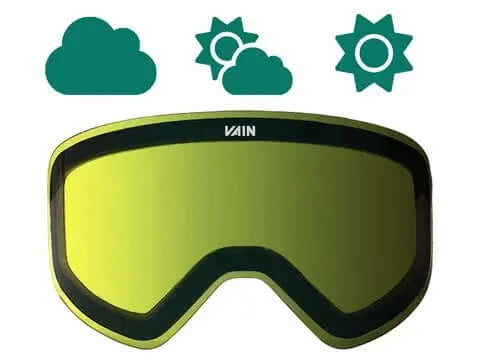
This offers a big benefit compared to normal lenses, although they are 2 times as expensive as normal lenses. It is something to take into consideration, you can buy 2 different single lenses for the same price. The 2 single lenses can give you a complete coverage of weather circumstances. Which the photochromatic lens cannot.
This leaves the decision to having the convenience of a photochromatic lens or a better coverage of 2 separate normal lenses. Multiple lenses have other benefits that put them above photochromatic too.
9. Which lens coatings are there?
There are uncountable amounts of coatings available. We are going to give you the most common and valuable ones. These are the coatings we will explain in this ection:
- Anti-fog coating
- Anti-scratch coating
- UV 400 coating
- Polarizing coating
- REVO coatings
What is an anti-fog coating?
An anti-fog coating is applied to reduce the amount of moister building up on the lens surface. It is the most important coating as it maintains the best vision. There are a few different types of anti-fog options

Anti-fog films
Anti-fog films are most commonly used for ski goggles, where a lens is covered with a transparant film that lowers surface tension and formation of water droplets. These films have a more permanent effect than other treatments.
Surfactants
Surfactants are surface layers that bond with water and form a sealed layer so that there will be no water droplets. Examples of surfactants are rubbing shampoo or soap on your lens and wiping it off without rinsing.
Hydrophilic coatings
Hydrophilic coatings are layers that attract moisture and dissolve into water so that the water droplets become a film of water instead. These coatings can be applied easily by a spray on the lenses, but on the downside won't last really long.
All of the mentioned anti-fog treatments will work efficient. Although some are more permanent that others. We would recommend ski goggles with an anti-fog film as it has the most permanent effect.
What is an anti-scratch coating?
The anti-scratch coating applies a hardened layer on the outside of the lens. This makes it harder to scratch the lens. Although this sounds perfect, scratches can still be made on the lens. It is only an improvement to protect the coatings underneath.

Why can’t the anti-scratch be better?
If something is scratch resistant, it is mainly really hard and brittle. You don’t want a brittle lens, for example as glass. Glass is quite hard to scratch but would break on the first fall you make. The anti-scratch layer is the best of both worlds to reduce scratches and not breaking easily.
What is an UV400 coating?
The UV400 coating is stopping harmful sunlight from entering the eyes. The name UV400 stands for ultraviolet (UV) 400 nanometer (nm), meaning that it stops the UV rays up to wavelengths of 400nm. If your snow goggles have a CE mark, then your set, they will have the UV protective layer.

Why doesn’t it block 400-800nm UV rays?
The color rays with a wavelength of 400-800nm aren’t harmful and are what we see as colors. We want to maintain a good visibility and therefore only block light with wavelengths under 400nm.
What is a polarizing coating / polarized lens?
Polarization is the effect of light that is highly dense packed and seen as glar/snow blindness which can cause eye fatigue. It is often caused by light being reflected on a surface. For example a glass building that reflects the sunlight or a snowy landscapes. The polarizing coating or layer will undo the effect of the reflection. So that you won’t be surprised by some heavy reflection.
What is a REVO coating?
The most commonly used visual and more glare enhancing coating is the REVO coating. It’s a coating developed by NASA for space shuttles. It’s highly effective because they are designed for use in space. When you’re in space, sunlight is extremely dangerous because there is no ozone layer to protect you. Therefore, you will need an extreme amount of protection.

Luckily, we can use this coating for our ski goggles too. We can apply the REVO coating in thin layers and achieve an amazing effect. A big benefit of the REVO coating is that it goes really well together with coloring and reflective or mirror coatings. Little to no distortion is caused by the combination and is thus perfect to be used for snow goggles.
The REVO coating is the best coating for achieving perfect mirrored lenses.
10. Question and answer
This section will answer the most frequently asked questions about ski goggle lenses.
What ski goggles should I buy?
You should buy ski goggles that are applicable in all weather conditions. This sometimes includes buying a goggle with interchangeable lenses.
Can you ski without goggle?
Yes, you can ski without goggles, but it's not advisable. The cold wind will hurt your eyes after some time. Besides that the chance of something flying in your eyes at high speeds.
Which lens color is best?
There is not "one" best lens color. It really depends on your personal liking and how you perceive light and contrast. The most "common" and forgiving lens is a base grey lens of CE category S2 with a colored REVO coating.
Need such a ski goggle with all-round lenses? Check out our collection with the button below:
Are photochromic ski goggles worth it?
In general, no. But they do come handy in some cases. A photochromic lens is not an all-round use. But for flat light situations with sun breaking through the clouds, it can be convenient.
The price of photochromic lenses can't compete with REVO coated lenses. As you can buy 2 REVO lenses for the price of 1 photochromic. The 2 lenses can cover more weather conditions, but do require swapping the lens.
Which ski goggles for low light?
Any ski goggle with an CE category S1 lens with VLT between 43-80% is good. It depends on your personal preferences if you go low or high on VLT in these situations. Picking one around 60% VLT would be safe for anyone.
What ski goggle lens for different conditions?
It's advisable to get a ski goggle with interchangeable lenses if you want to adjust to any weather type. Although if you choose for 1 lens, go for a lens with a VLT value between 20-30%. Even better when they have a REVO or alike coating applied.
Are ski goggles polarized?
Not all ski goggles are polarized, but they can be. It is also not always necessarily to have a polarized lens. Some coatings, like the REVO coating have a similar effect against glare. Alternatives like the REVO coating are way cheaper.
1 comment

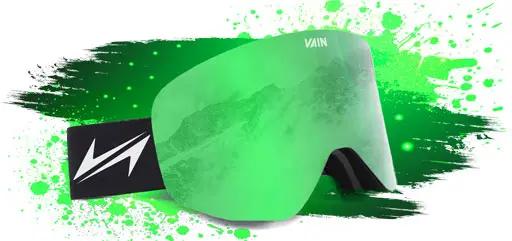
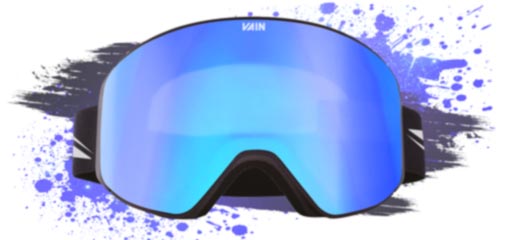
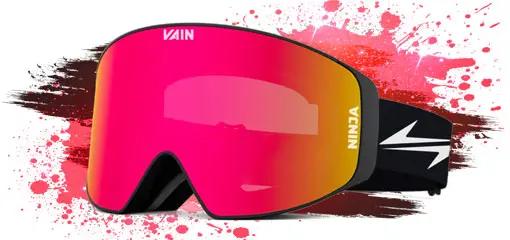
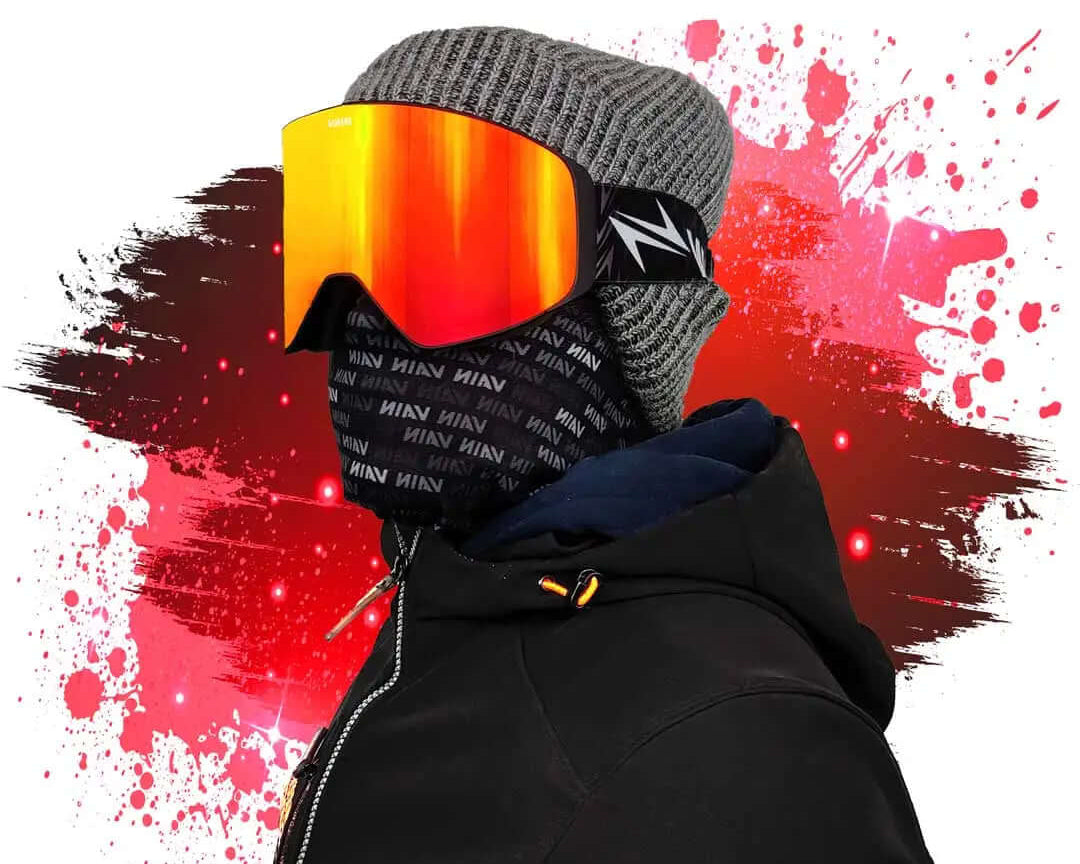
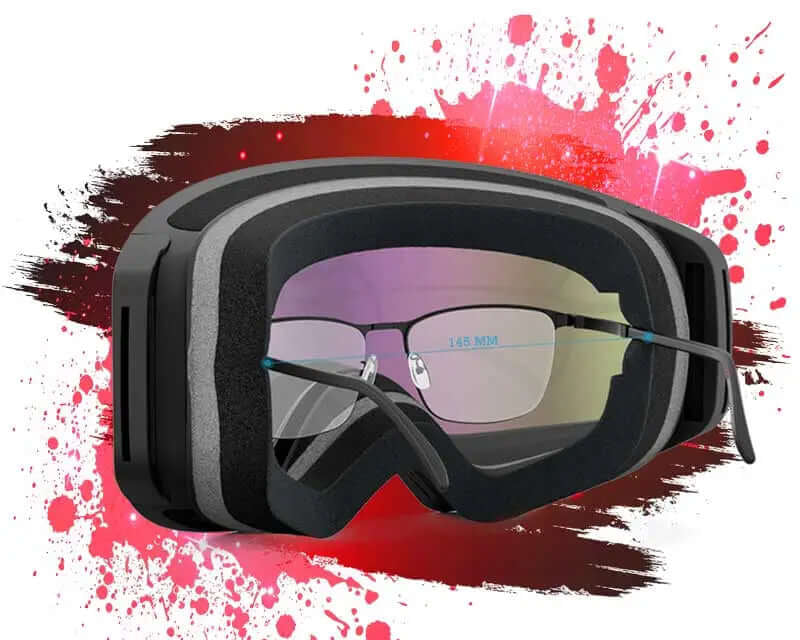
Top artikel!!